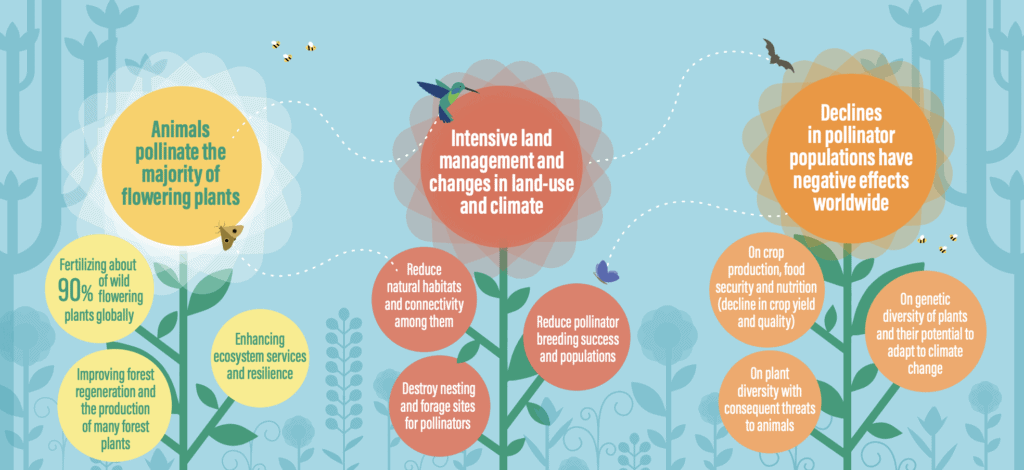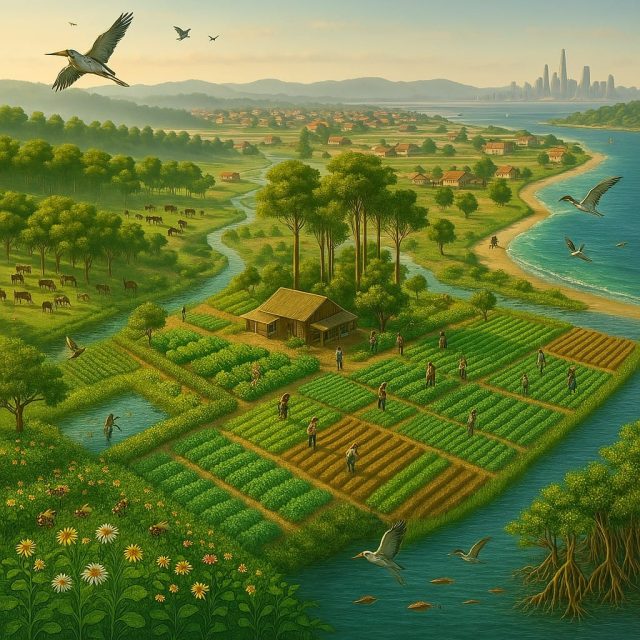The Pollination Services of Forests
- From
-
Published on
20.05.21
- Impact Area

Since they are a vital part of the reproduction process of many plants, a decline in pollinators is a serious issue for biodiversity and resilience ecosystems.
Wild pollinators fertilize most flowering plants, enhance seed and fruit production and increase genetic diversity, which improves regeneration and strengthens the ability of plants to adapt to environmental changes and pathogens.
This year, we would like to celebrate both World Bee Day (20 May) and the International Day for Biological Diversity (22 May)with wild pollinators by launching an infographic dedicated to them!Forests and trees are important repositories of biodiversity, and wild pollinators depend heavily on them as primary nesting habitats and forage sites. Adaptive forest and landscape management enhances pollination services.The Food and Agriculture Organization of the United Nations with the Alliance of Bioversity International and the International Center for Tropical Agriculture are pleased to release an infographic on the pollination services of forests. It is based on the publication entitled “The pollination services of forests” highlighting the importance of forest and landscape pollination-friendly management practices.Are you a policymaker, a landscape manager, or a forestry practitioner?Are you interested in learning about pollination-friendly management?Find the infographic in:Englishor in any of the UN languages:ChineseSpanishFrenchRussianArabic
Related news
-

ICRISAT to Deliver World-Class Services as CGIAR’s Breeding Resources South Asia Hub
International Crops Research Institute for the Semi-Arid Tropics (ICRISAT)07.07.25-
Biodiversity
-
Food security
Strategic collaboration to scale innovation and deliver harmonized, high-quality support across CGIA…
Read more -
-

Multifunctional Landscapes that reconcile food production, with ecosystem restoration and biodiversity conservation
Multifunctional Landscapes Science Program06.07.25-
Biodiversity
-
Environmental health & biodiversity
The CGIAR Multifunctional Landscapes Science Program (MFL SP) is driven by a bold vision of…
Read more -
-

Agrobiodiversity for People and Planet: How Multifunctional Landscapes Safeguard Diversity, Resilience, and Livelihoods
Multifunctional Landscapes Science Program30.05.25-
Biodiversity
-
Climate adaptation & mitigation
-
Environmental health & biodiversity
-
Food security
-
Health
-
Nutrition
Agriculture and food systems have significantly affected over 75% of Earth's land surface, polluted …
Read more -
